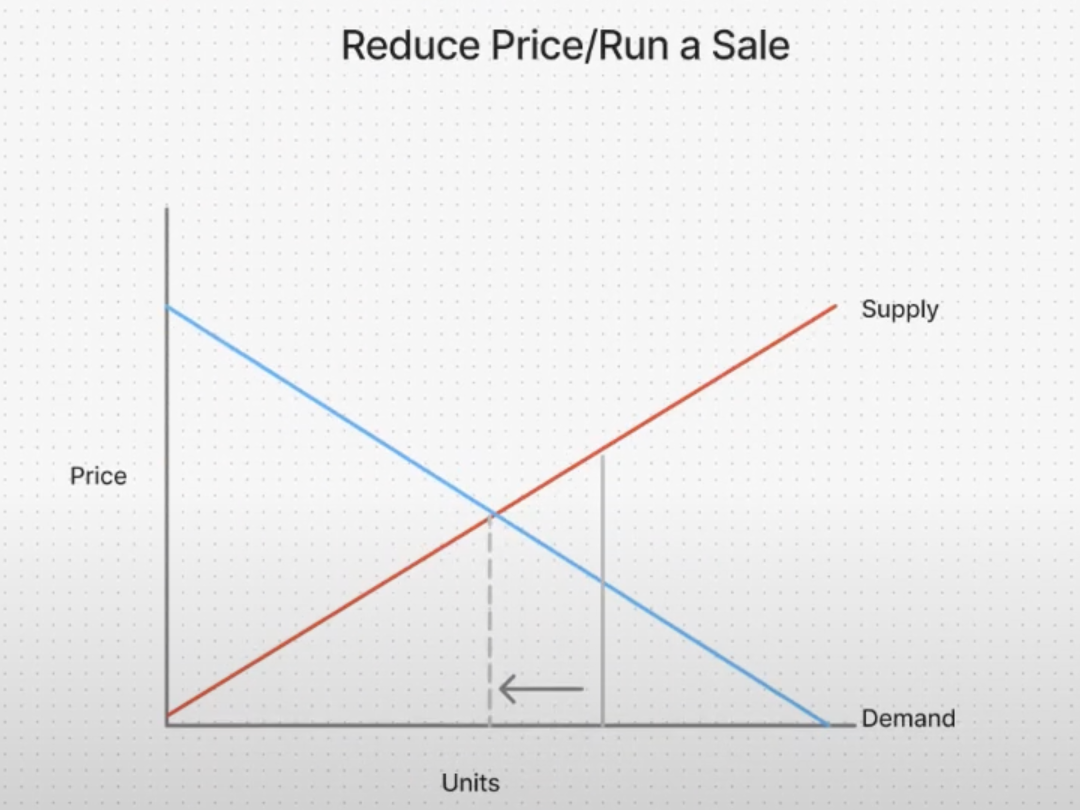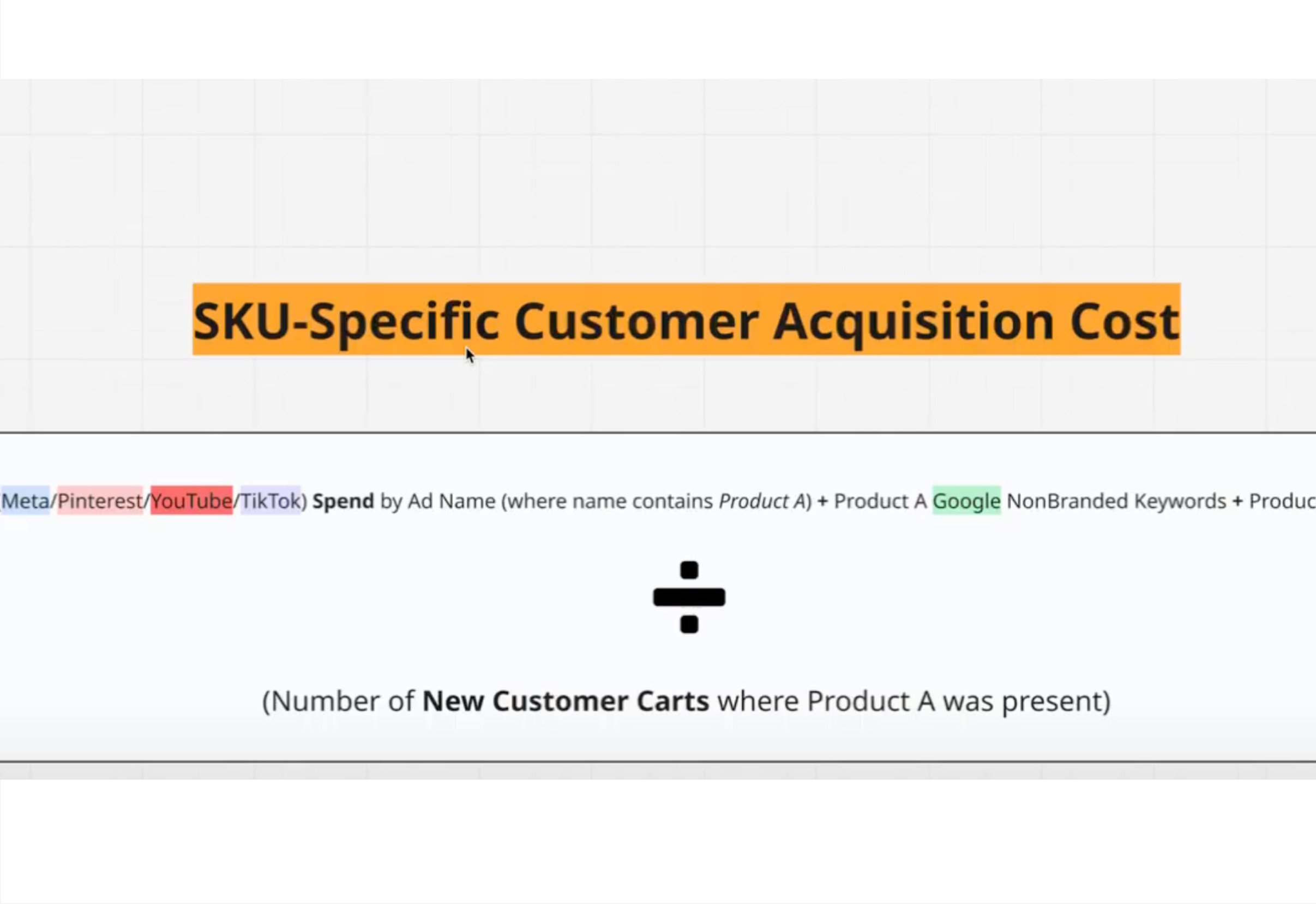Influencing consumer behavior via pricing & marketing strategies
One of the biggest questions that people face when it comes to ads buying is: How exactly are we influencing people to buy our product?
To understand this, let's start with a fundamental economic principle that every marketer should know: the supply and demand graph.

Understanding Supply and Demand in Your Business
You might have seen this before, but it's worth revisiting. The demand curve shows us that as price decreases, more and more people are willing to buy your product, depending on their willingness to pay.
Think about it this way: People who greatly want your product are willing to pay a very high amount. But the more you want to sell—the wider the audience you want to reach—the more you have to reduce your price to incentivize people who see less value in it.
Take a golfer, for example. An avid golfer is already going to want to buy a new tee that might get them an extra 10 yards off the tee box. But the more casual that golfer is, the less they see the value in the product, and the less they're willing to pay for it.
On the supply side, as price increases, the more you're going to want to produce because you're incentivized to earn extra money from it.
At the center point is the equilibrium—where you create the exact amount of products that is being demanded at a price that both you and the consumer agree on.
The Reality: You're Rarely at Perfect Equilibrium
Here's the thing: very rarely does a business achieve this perfect equilibrium. Typically, there's going to be some swing in the market where you may start by overproducing or underproducing. You may realize that the price is too high or too low. And of course, there are different trends in the market that influence demand, which affects how much you're willing to produce.
So let's say you're theoretically at a $50 price point, but the equilibrium is around $40, and you have a certain amount of supply you're wanting to move. What can you do?
Two Strategies to Influence Buying Behavior
There are two main approaches you can take to influence the buying process and move that demand.
Strategy 1: Reduce Your Price (The Quick Fix)
The first—and most predominant—approach is reducing the price or running a sale.

It's simple: once you reduce the price, you're attracting more customers and moving up on the demand curve, selling more of the product.
The problem? This approach isn't very sustainable.
You've set your price for a reason—maybe it's to protect your margins or to cover your operating costs. So reducing the price, whether for a one-time sale and promotion or a long-term change in your overall pricing structure, means you're ultimately sacrificing some of the sustainability of your business.
From an ads perspective, we love price reductions because they make it easier to get customers through the door. The cost of generating an order and attracting a new customer goes down. You can scale your ads program at higher volume during the discounted period.
But it's not sustainable for the business.
Strategy 2: Shift the Demand Curve (The Smart Play)
The other method is to introduce new creative types and messaging in a way that can potentially attract new audiences.
What this does is actually shift the demand curve outward, meaning you're going to be able to sustain the price point you were originally running at.

How to Shift Demand Through Marketing
Going back to our golf tee example—maybe you get a testimonial from a professional golfer who can attest to the extra yardage they can achieve with this new high-performance tee.
Maybe you secure press coverage from Golf Digest or similar publications. These create social signals that influence buyers into thinking, "You know what, I actually do need the extra performance from this product. If somebody else can vouch for it, maybe it's right for me."
Or perhaps you have a product where you're servicing a very specific niche, and you've found that you've maximized your volume of sales within that audience. What's that additional audience you could reach?
Try some new messaging and influence their perspective of the product so they're willing to pay that higher price point.
The Ads Platform Advantage
All of these activities happening within your ad account are going to shift that demand outward, allowing you to:
- Make more sales at your desired price point
- Scale your ads platform more profitably
- Build sustainable growth rather than relying on discounts
In the ads platform, we handle this by introducing new audiences into our campaigns—people we think might be receptive to new messaging and sales angles.
Maybe it's a collaboration, a partnership, or something that adds social proof to your product. These strategies increase the perceived value of your product, allowing you to sustain sales at that higher price point by shifting the demand curve outward rather than reducing your pricing.
The Bottom Line
This framework gives you a powerful way to think about your overall sales, marketing, and how they influence sales volume:
- Understand where you currently operate on the supply and demand curve
- Consider short-term price reductions for quick wins (but recognize they're not sustainable)
- Focus on shifting demand outward through new creative types, messaging, audiences, and value-building initiatives
The sustainable path forward isn't about constantly cutting prices—it's about increasing the perceived value of your product and reaching new audiences who are willing to pay your full price.
That's how you build a profitable, scalable business that doesn't rely on the discount treadmill.
Check out our other articles.
Get started today.
We only work with a handful of clients per year. If you're interested, book a discovery with our founder to see if this is a good fit.
What we do
Grow & scale your paid media program with a boutique team of eCommerce advertising pros.
Case studies
See what we've done for other brands and how we can help you. Read their stories.




.png)
